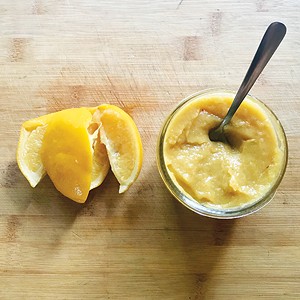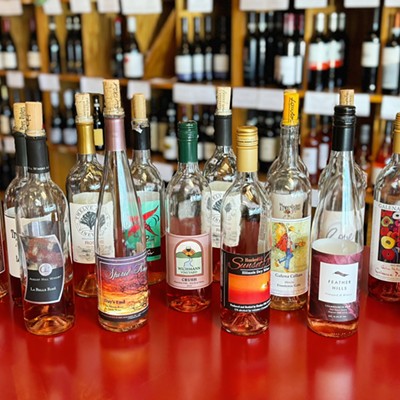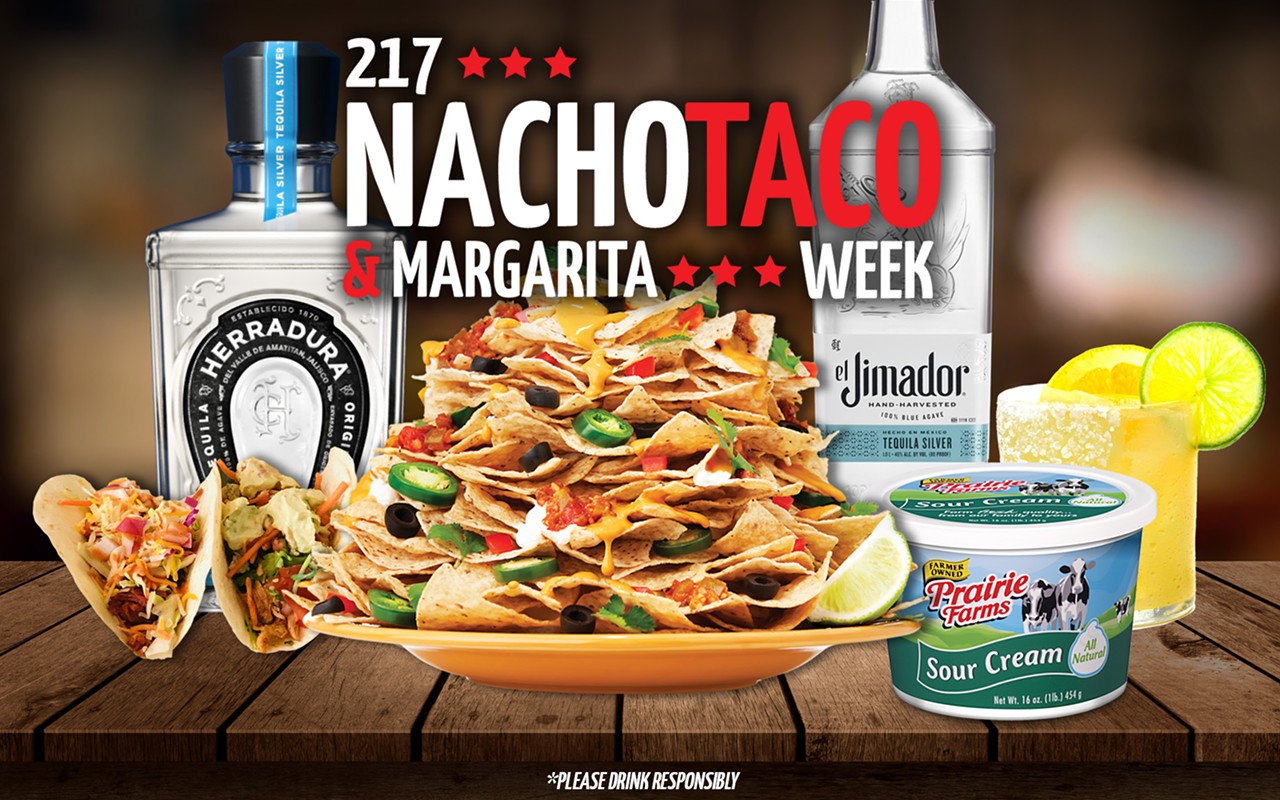When we lived in the old Spaulding Orchard farmhouse, we were running three refrigerators and three freezers, usually all full. My late wife would buy, process and freeze produce by the bushel. She would save and freeze all our chicken carcasses and wingtips until she had accumulated enough to fill a five-gallon stockpot and then make and freeze gallon freezer bags of chicken stock. When I cleaned out the freezers in preparation for selling the house, I even found a whole suckling pig and a lamb's head buried in the back.
After selling the old farmhouse, I rented a small house in Laketown with only one refrigerator. I continued the practice of making chicken stock and blanching and freezing vegetables and quickly ran out of room so I bought a chest freezer for the garage. It too became filled to the max. When I moved to Oklahoma to start my second career as a chef, I rented a small apartment with only enough room for a small fridge so I had to scale down my inventory even further. Now I'm living in a 350-square-foot bus and my fridge/freezer unit is smaller yet. I'm really fighting for space.
When I was cleaning out the refrigerator in our Oklahoma City apartment in preparation for moving to my next restaurant job in Michigan, I had to throw away all the opened jars of condiments. However I couldn't walk away from my two jars of homemade preserved lemons. (See my article, "When life gives you lemons, preserve them," in Illinois Times June 21, 2018, at illinoistimes.com.). Preserved lemons are a fermented condiment commonly used in North African and Middle Eastern cuisine. Originally conceived as a way to use lemons in the off-season, preserved lemons bring a unique fermented quality to a dish that regular lemons cannot: strong citrus and floral notes that impart a savory umami to a dish.
I must admit that I prepare North African or Middle Eastern dishes calling for preserved lemon only occasionally, but the liquid from preserved lemons is wonderful in Bloody Marys, which I prepare quite frequently. However, now that I'm living in a school bus and always having to play the Tetris game while squeezing everything into my tiny fridge, my two quarts of preserved lemons were taking up way too much valuable real estate. I had reached the "use it or lose it" point.
In my last restaurant job, whenever I was assigned a dish to prepare without being handed a recipe I would have to use my best judgment and then have the chef de cuisine taste my creation for approval. Most often I would be told it needed more salt or more acid – either lemon juice or vinegar. When I worked at American Harvest there was always a squeeze bottle of lemon juice on the line. Lemon juice "brightens" a dish. If you've ever cooked something and it tastes okay but is kind of blah, try adding a squeeze of lemon juice. Or if your dish tastes flat or bitter, try adding a bit more salt. Preserved lemons are a way of adding both salt and acid, as well as a dose of savory umami.
Typically, when a recipe, such as a Moroccan chicken tagine, calls for preserved lemon, it asks for the rind to be minced or thinly sliced and added early in the cooking process so its flavor can disperse through the dish. This requires pulling out a cutting board, scraping off the pulp and seeds out of the preserved lemon wedge, and mincing or slicing the rind. For this purpose I keep a small container of intact preserved lemons. The rest of my two quarts of preserved lemons I made into a paste known in Hebrew as mimrach limon kavush. Now when I want to adjust the seasoning for salt and acid, I grab my container of preserved lemon paste and spoon it into my dish a dab at a time until I achieve the desired flavor. The pureed lemons disperse easily through the dish, imparting a citrusy complexity and floral brightness.
The paste is super convenient and easy to make. First you remove any lemon seeds – they would give an undesirable bitterness. Then you puree the preserved lemons in a blender – both the rind and the pulp – until a smooth paste is formed. The puree can be used in any dish that calls for lemon zest or lemon juice. Simply pull your container out of the fridge and spoon a little dab into your dish. Substitute the paste for vinegar or lemon juice in your salad dressing. Add it to pureed chickpeas and tahini to make hummus. Make a marinade for chicken breasts by combining it with garlic, rosemary or cumin.
In addition to making your preserved lemons more accessible, turning them into a paste allows you to move down to a smaller container, which frees up space in your fridge. If you want to be a better cook, try using preserved lemon paste. It will, as Emeril Lagasse likes to say, really "kick it up a notch." Bam!
Preserved lemon paste
To make preserved lemons:
3-5 lemons (preferably organic)
Kosher salt
Scrub the lemons.
Quarter each lemon from the top to within 1/2 inch of the bottom leaving lemon attached at one end.
Rub kosher salt over the cut surfaces, and reshape the fruit. Cover the bottom of the jar with salt. Pack in all the cut lemons. Sprinkle salt on each layer.
Press the lemons down to release their juices and, if necessary, add additional lemon juice into the jar until totally covered with liquid.
Close the jar and allow to ferment at room temperature, agitating the jar every day for 3 to 4 weeks or until the rinds are tender to the bite.
To make the paste:
Remove any seeds and rough chop the lemons.
Puree the chopped lemons in a blender until a paste is formed. Thin as needed with some of the juice from the jar.
Store in the refrigerator.
Until it's safe for Milkweed Inn to host weekend guests in Michigan's Upper Penninsula, Chef Peter will be taking Bertha Bus to Ann Arbor to participate in the Kitchen Farming Project with the Zingerman organization. The Kitchen Farming Project is a new initiative created to provide displaced chefs the opportunity to work as farmers, growing the food they cook.


















